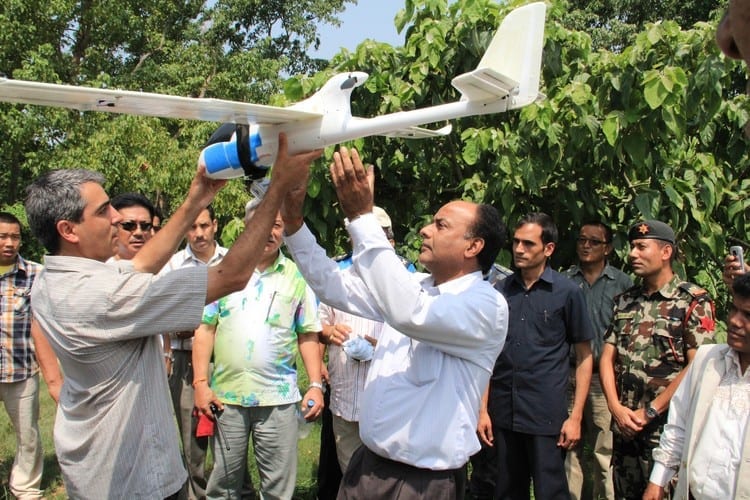With $5 million from the search giant, the World Wildlife Fund is deploying unarmed drones to track and hunt down wildlife poachers.
When the World Wildlife Fund (WWF) wanted to fight animal poachers–illegal hunters of wildlife–they decided to bring in an unorthodox weapon: Drones. But these drones were different from the killer Predators of public imagination. Instead, they were unarmed, superlightweight, and users launch them by throwing them into the air–in fact, they are heavily modified model aircraft. After negotiations, Nepal was chosen as a pilot site for the wildlife drones. First launched in mid-2012, the WWF drones offered a new, experimental method of stopping poachers.
Now, wildlife-protecting drones are coming to the rest of the world. Last week, Google announced they would help the WWF purchase African and Asian poacher-seeking UAVs. As part of Google’s 2012 Global Impact Awards program, the WWF received $5 million to buy similar unarmed drones to watch and track African wildlife poachers.
“We want to use integrated technologies to create a protective umbrella around [animals in poacher zones],” says Crawford Allan of Traffic, the wildlife trade monitoring network. Traffic is a joint project of the WWF and the International Union for the Conservation of Nature dedicated to monitoring illegal trade in plants and animals. Alongside drones, the WWF is experimenting with using a number of other high-tech tools such as night-vision cameras, heat imagery systems, and GPS tagging of animals in poacher-infested zones.
In a conversation with Fast Company, Allan noted the importance of poachers feeling that they are “watched and monitored.” More importantly, later versions of anti-poacher drones can integrate GPS-tagged animals and ground-based analytical databases and algorithms to generate predictive analytics of where poachers will operate. Although these capabilities are not currently available–both the African and Nepalese drones are relatively simple, early-generation affairs–they are within easy technological reach over the next few years.
via FastCoExist – NEAL UNGERLEIDER
The Latest Streaming News: Poacher surveillance updated minute-by-minute
Bookmark this page and come back often
Latest NEWS
Latest VIDEO








